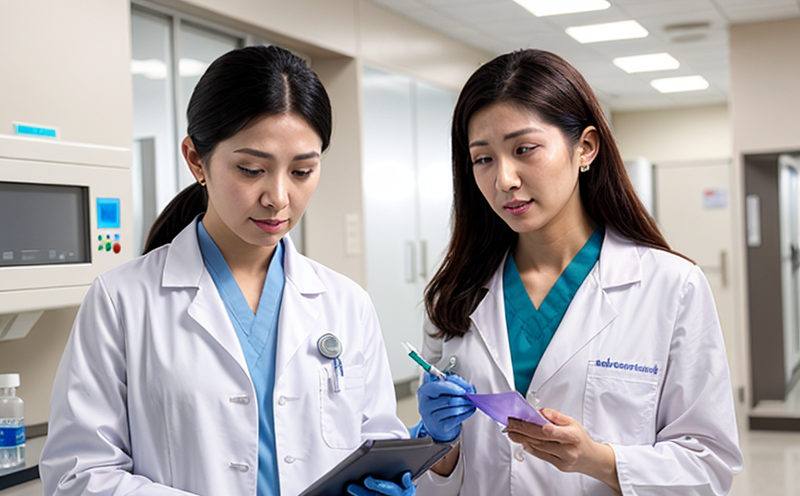EP Peptide Mapping Testing by LC MS
The European Pharmacopoeia (EP) peptide mapping testing using liquid chromatography-mass spectrometry (LC-MS) is a critical analytical method in the pharmaceutical industry, particularly for biopharmaceutical and biosimilar products. This technique plays a pivotal role in ensuring product quality and safety by providing detailed information on the protein structure.
Peptide mapping involves digesting proteins into smaller peptide fragments, which are then analyzed using LC-MS to identify their masses. This process helps in assessing the purity, identity, and structural integrity of biologics such as monoclonal antibodies (mAbs), fusion proteins, and therapeutic peptides.
The European Pharmacopoeia sets specific standards for peptide mapping tests, emphasizing reproducibility, accuracy, and robustness. Compliance with these guidelines ensures that the results are reliable and can be trusted by regulatory bodies like the FDA and EMA.
LC-MS technology is chosen due to its high resolution and precision in detecting even minor differences between peptides, making it ideal for identifying post-translational modifications such as glycosylation or oxidation. These modifications can significantly affect the biological activity and immunogenicity of biopharmaceuticals.
The process typically begins with sample preparation, which includes protein digestion using enzymes like trypsin. The resulting peptides are then separated by LC-MS, where they undergo ionization before being introduced into the mass spectrometer for analysis. Advanced data processing software is used to interpret the mass spectra and generate a peptide map.
Accurate peptide mapping is crucial not only during development but also in manufacturing and quality control phases. It helps in verifying that the final product meets the defined specifications, supports comparability studies between different batches or versions of the same drug substance, and aids in troubleshooting process deviations.
The EP guidelines recommend using multiple reference standards to calibrate the instrument and ensure consistent results across laboratories. This approach enhances the reliability and reproducibility of peptide mapping tests, which is essential for maintaining high-quality standards in biopharmaceutical manufacturing.
Scope and Methodology
| Aspect | Description |
|---|---|
| Sample Preparation | Proteins are digested using enzymes like trypsin, followed by cleanup and desalting. |
| LC-MS Instrumentation | An LC-MS system is utilized with a gradient elution to separate the peptides based on their retention times. |
| Data Processing | The raw data from the mass spectrometer are processed using specialized software for peak integration and alignment. |
| Reference Standards | Multiple reference peptides are used to calibrate the instrument and validate results. |
Industry Applications
The application of EP peptide mapping testing by LC-MS spans various stages of biopharmaceutical development, from early-stage research to post-market surveillance. It is particularly valuable in:
- Development and Characterization: Early identification of protein variants and post-translational modifications.
- Manufacturing Process Optimization: Monitoring process changes for consistency and quality assurance.
- Comparability Studies: Ensuring that different batches or formulations are equivalent in terms of peptide composition.
- Quality Control: Routine checks to verify product specifications and detect any deviations from the standard.
- Biosimilar Evaluation: Establishing biosimilarity by comparing the peptide maps of reference and candidate products.
Competitive Advantage and Market Impact
Adopting EP peptide mapping testing by LC-MS offers significant competitive advantages in the biopharmaceutical sector:
- Pioneering Innovation: Stay ahead of regulatory requirements and industry trends.
- Enhanced Product Quality: Ensure consistent quality and stability, reducing the risk of product recalls.
- Better Compliance: Adhere to international standards like the European Pharmacopoeia, enhancing trust with regulatory bodies.
- Improved Efficiency: Automate routine testing processes, freeing up time for more strategic initiatives.





